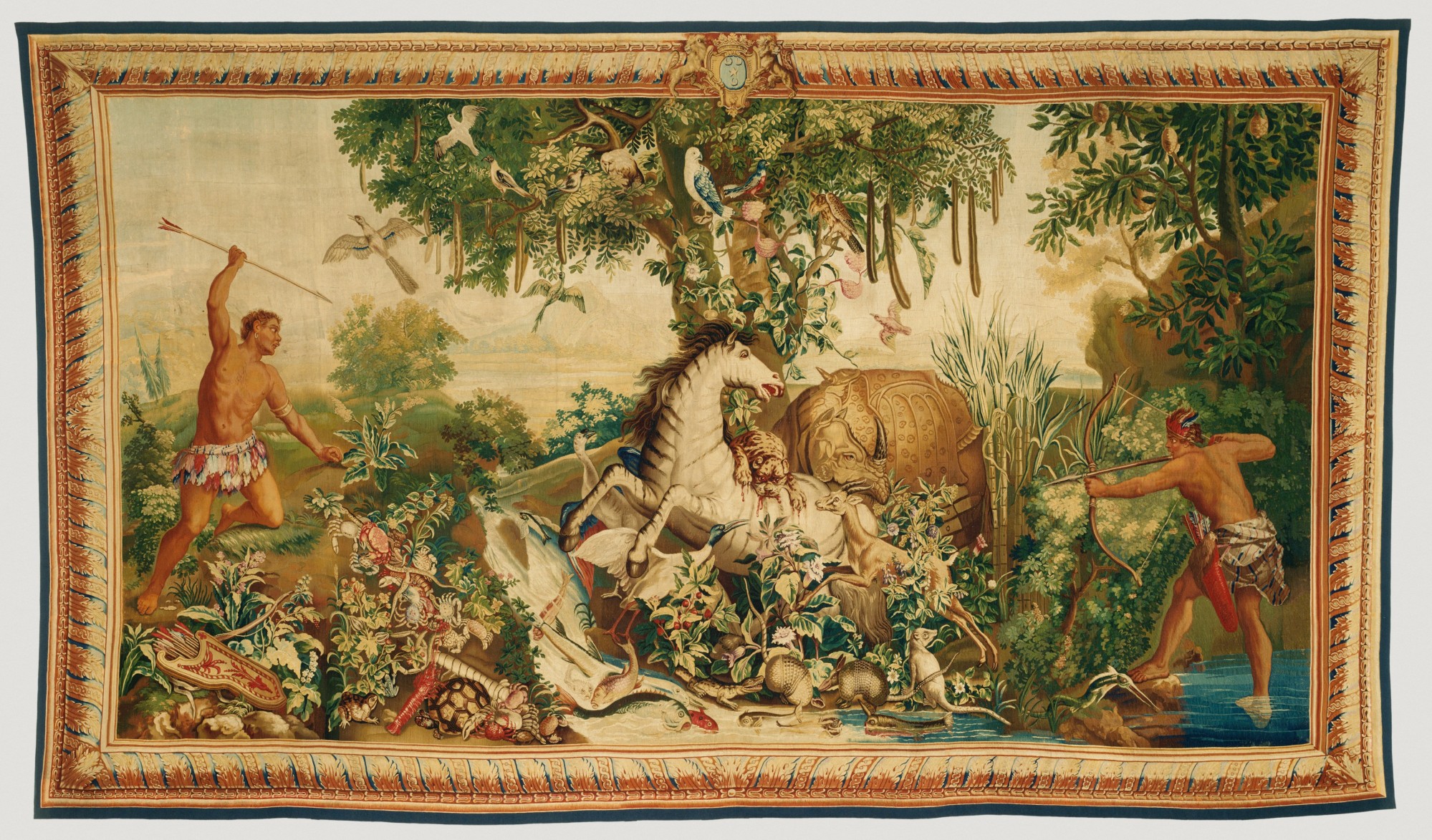Tapestries from the Gobelin family, who established themselves as dyers in the 15th century, and were based from the early 17th century at the Gobelins Manufactory in Paris, are widely considered to be the most outstanding pieces in the European tapestry tradition.
British contemporary artist Stephen Thorpe, formerly a professor at Savannah College of Art and Design in Hong Kong, who recently staged the exhibition “Enter the Forest at the Darkest Point” at Ora-Ora in the city’s Central district, featuring his own tapestry-influenced work, tells Richard Lord how they changed his life.
I have very early childhood memories of rugs at home. It’s where my interest in interior space comes from. There were olive green carpets at home with really garish patterns.
I have strong memories of their smell and texture – it always stuck with me. Also, my grandmother lived in a high-rise and had horrible orange carpets – but again, they resonated with me with their texture and smell.

It’s something I started exploring in my practice: what is a rug, where was it made, what are the weaves and textures and materials?
Gobelin was the leading manufacturer of tapestries, and Gobelin tapestries are renowned for their quality. It basically had a monopoly, and produced really high-quality tapestries. It’s why you can still see them today: they retain their colours and imagery.
Even though they’re faded, they’re still vivid. And their imagery is so striking. In terms of the narrative, they’re all about European forests, which lends itself to the title of my show. They’re so visual in their depictions.
Some are more decorative, featuring forestry and animals, but the symbolism of animals is also very prevalent. The religious iconography and the storytelling very much lent themselves to the title of my show.
As an artist, I’m interested in the interior architectural space. It’s quite an organic process. Obviously my nostalgia for carpets and rugs was part of my interest that led to me learning about types of weave and thread.
In Hong Kong, in the bazaar at Sham Shui Po, where there are thousands of rolls of material, I spent a year finding the closest weave I could find (to traditional European tapestries).
It’s a 14-inch denim weave: I prime it, and paint it using a dry brush technique, so the paint sits on top. Traditionally, the canvas is like the ground for a work; I integrate it into the work.
Traditionally tapestries are used on walls. In my work they’re out of context, subverted in the ways they’re represented. My work contradicts itself at every turn. The history of tapestry and weaving is predominantly a female endeavour; it’s interesting to subvert that as a male painter.
When you research anything and start to understand the people and the processes involved, you really understand the undertaking, the endeavour, the skill, the process.
It gives you an absolute respect for the process: the enormous looms with teams of people, where everything had to be so meticulously placed and woven. It was such a highly curated endeavour.

